During the Jim Crow Era
Rosedale Beach
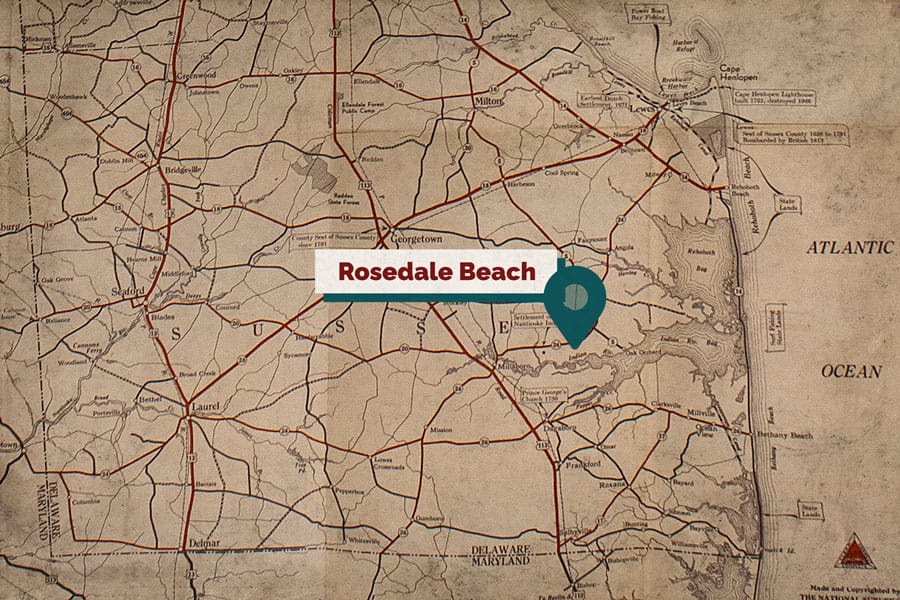
The land in the twentieth century known as Rosedale Beach has a long complicated history encompassing the Nanticoke people, white European settler colonialism which first began in the seventeenth century, slavery, and then formerly enslaved African American people that settled in the area. The Nanticoke people, also known as the “tidaewater people” of the area were known for their knowledge of herbal medicines, for creating roanoke or shell beads similar to wampum, and for their knowledge of constructing bridges across creeks. The Nanticoke were known as master traders by the British settlers that interacted with them during the seventeenth and eighteenth centuries.
The Nanticoke interacted with and had their lands invaded by British, Dutch and Swedish settlers. Acres of land set aside as the reservations of the Nanticoke and other Indigenous groups by the white settlers were eventually removed from the face of Delaware’s landscape between the 1740s and 1760s. Consequently in 1748, most of the Nanticoke people had moved north up the Susquehanna, some to Pennsylvania, some to New York, and some to the Iroquois in Ontario, Canada, with whom they gradually became affiliated and then fully adopted in 1753.
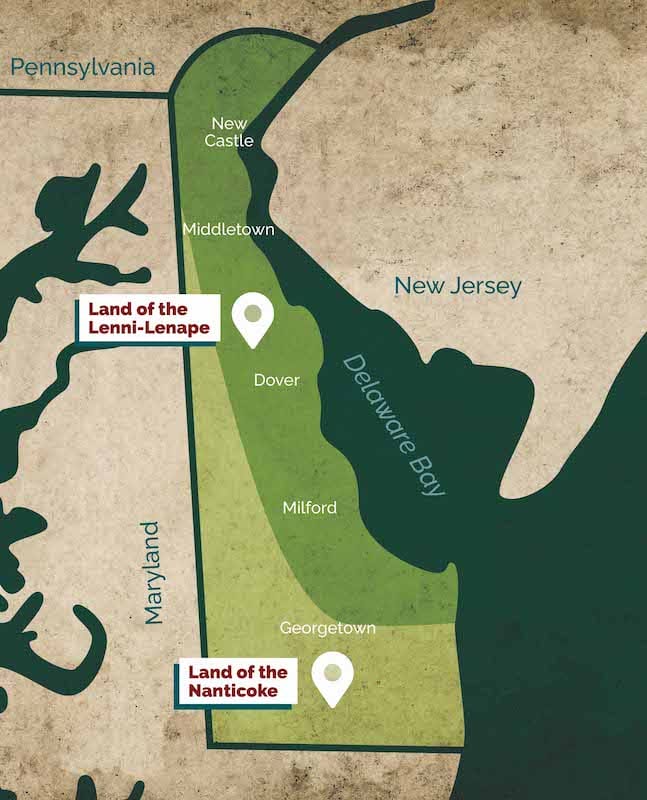

The Nanticoke people who remained in Delaware continued living on the land of their ancestors. However, they had to endure the encroachment of white European settlers on the land they had freely foraged for food for centuries. The Nanticoke Indian people had to learn a system of land ownership and the process for acquiring land titles and deeds.
In this process, they became tenant farmers for the white European settlers. They obtained deeds for their ancestral lands and learned the European agricultural ways of farming the land. Slowly, Nanticoke people became landowners as they built their own wealth and understood this new system of land ownership.
Two Nanticoke people who became landowners in the area of Indian River Hundred were father-in-law and son-in-law, Levin Sokume and Isaac Harmon. Harmon, in particular, eventually owned hundreds of acres of land that included most of the land on the northeast side of Indian River from Rosedale Beach to Riverdale.

Isaac Harmon earned money as a seaman on a sailing vessel. Beginning in 1848 with his first seventy acre lot costing $250, Isaac slowly began to purchase lots of land from the white people of the area who then owned them. Harmon created an apple orchard and saw mill on the land, for which he hired fellow Nanticoke people to labor for income. In 1861, Harmon owned 147 acres of land, an old horse, one pair of oxen, one cow, and five shoats. By 1872, Harmon also owned 357 acres of land, a mansion, one pair of mules, one yoke of oxen, two cows, one yearling, nine sheep, one sow, and shoats. When Isaac died on April 23, 1900 of pneumonia, he left the land to his children. At the time of Isaac’s death certificate in 1900, Isaac and Sarah Jane had thirteen children listed, namely: Isaac Wilson, John Wesley, Noah, Levin T., Eliza Ann Johnson, Eunice W., Nancy T., Ceathew, Daniel, David, Ephraim Lincoln, Sarah Jane Johnson, and Lillie Mae Jackson.
Noah Harmon, the fifth son of thirteen children in the family, owned a portion of his father’s original land in Indian Creek Hundred and like his father he was known as a proficient farmer. Furthermore, he developed the seafood business his father had started on Indian River, which included an ice house. From this ice house he would also sell ice cream at a stand in addition to an amusement place which he called Noah’s Park. It was known to some people as Harmon’s Park.
The land passed between the Harmons and a few couples, including the Milford P. and his wife Grace M. Street, as well as, David “Dale” and his wife, Rosetta Street. By the early 1940s the land was all sold to Jesse Walter Vause and his wife, Geoffie M. Vause of Berwyn, Pennsylvania.
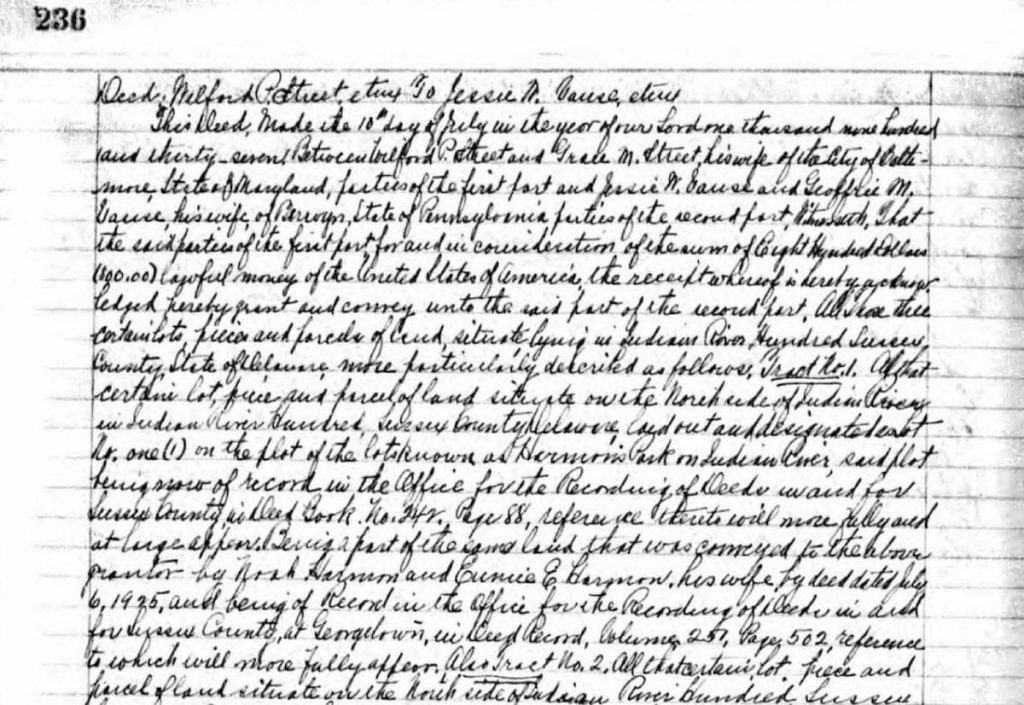

Jesse Walter Vause had visited the Rosedale Beach area and decided to purchase the land and the buildings situated on it to create an incorporated thirty-two room hotel and resort. On April 14, 1937, Rosedale Beach Hotel and Resort was officially incorporated as Rosedale Beach, Inc. by Jessie W. Vause, Floyd Vause, and his wife, Gussie Mae Vause. The incorporation documents included plans for a hotel, boardwalk, a hall for lectures, musical, literary, and social entertainment, as well as scientific exhibitions. Soon thereafter, the Vauses began inviting Black entertainers to perform at the venue, including those known to perform in venues along the Chitlin Circuit throughout the United States.

Rosedale Beach Hotel and Resort became a well-known vacation location for Black people around the middle of the twentieth century. The amenities on site were also updated to accommodate the vacationers they expected to visit the site. For instance, in 1946 a thirty-two room hotel was built on the land. The hotel building included a dining room, a kitchen managed by a chef and wait staff, a bar, and a dancehall.
On the evening of Monday, June 9, 1941 Count Basie and his orchestra performed at Rosedale Beach.
In 1944 Lionel Hampton performed at Rosedale Beach, evidenced by this poster advertising his performance.
The Vauses had the hotel and resort advertised in the 1949 Vacation Section and 1950 Vacation Guide of The Negro Motorist Green Book. In the 1950s, Robert Draine and Charles Laws recalled entertainers such as Ella Fitzgerald, Duke Ellington, Ray Charles, James Brown, and the young Stevie Wonder performing at Rosedale Beach.
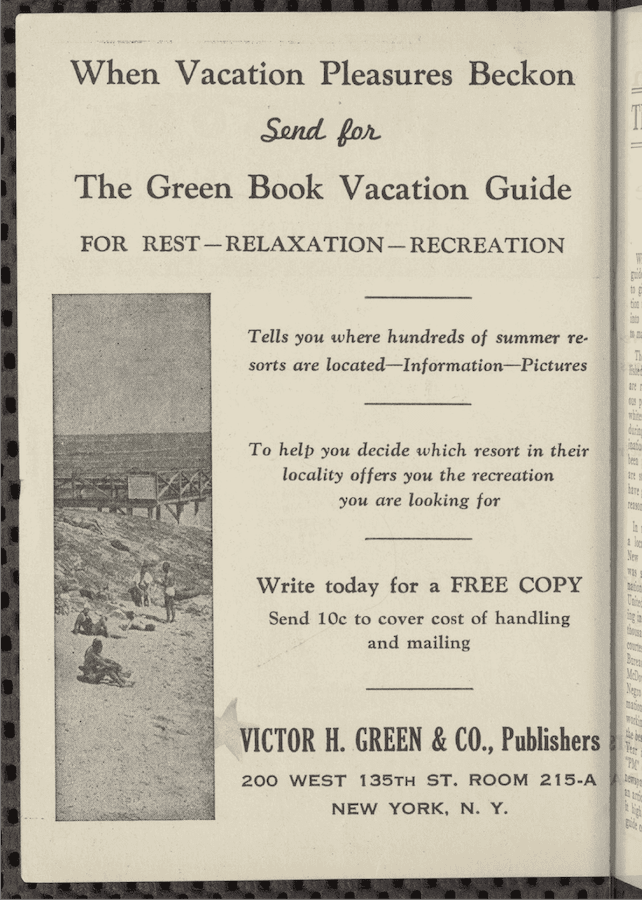
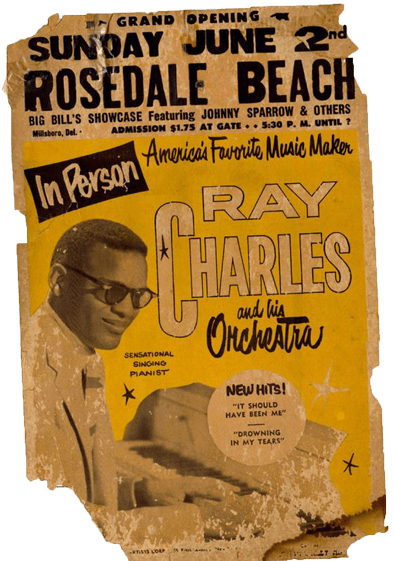
This poster for the grand opening of Rosedale Beach for the summer season of 1957 advertised a concert by Ray Charles and his orchestra performing.
Rosedale Beach Hotel and Resort was a refuge and place for musical entertainment for many people. It was the location that Black workers from other beach resort towns would visit because they felt more comfortable and welcome at Rosedale Beach than the location they worked. It was a location white boaters would sail up to listen to the concerts of the Black entertainers who performed on Sundays. It was considered a summer venue on the Chitlin Circuit of the mid-twentieth century.
Similar to many other sites, once the Civil Rights Bill of 1964 passed and places began to integrate, the resort saw a decline in visitors. Additionally, the boardwalk was destroyed by the storm of 1962 and was never replaced. Slowly, the land was sold off, finally to Gull Point, Inc who purchased the land in 1983 and began building condominiums on the land.
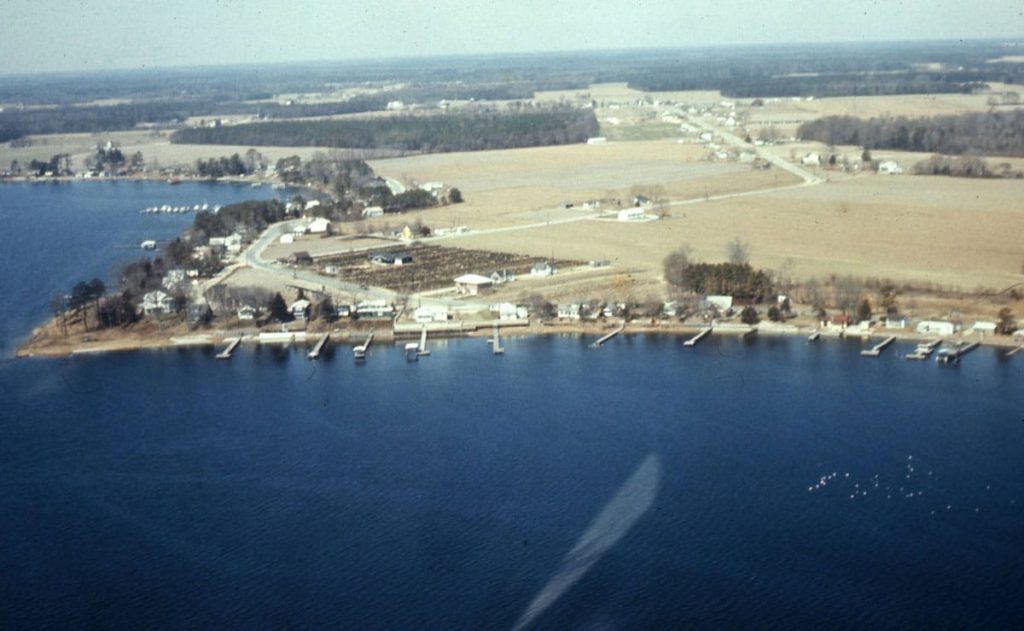
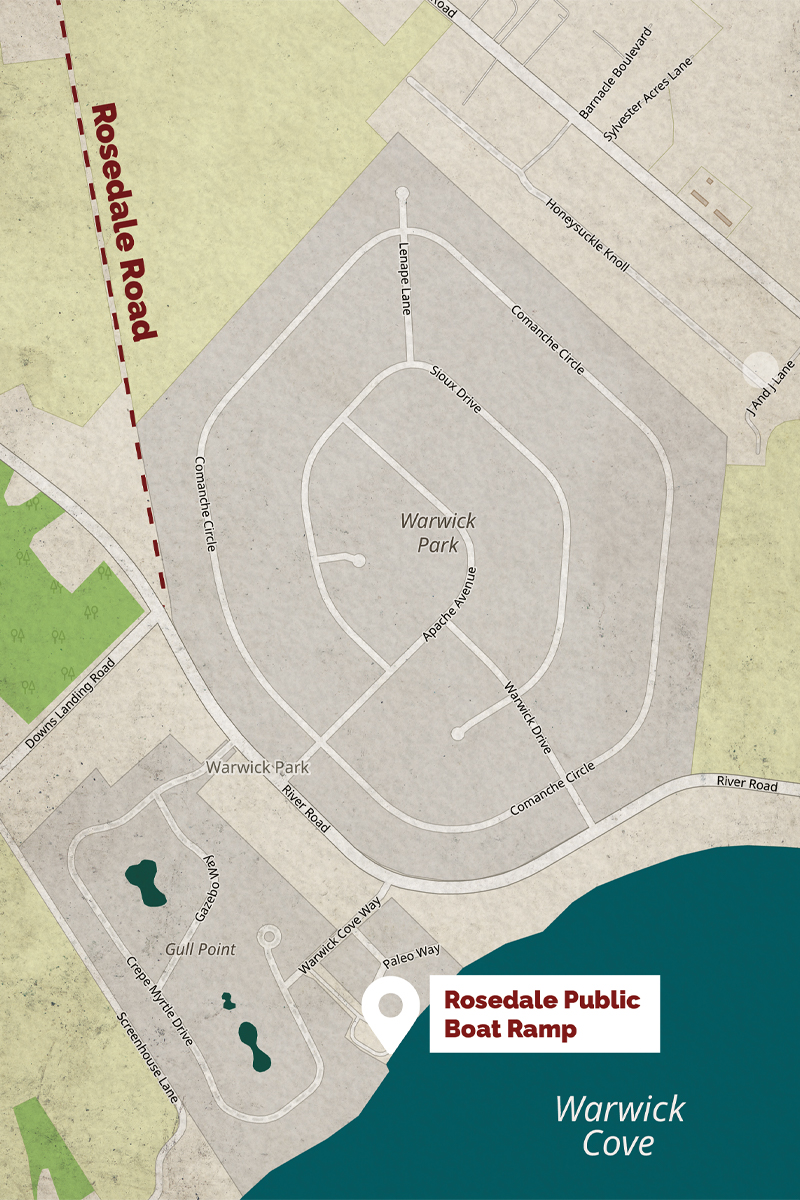
There are no structures that remain today to tell the story of the Black, Indigenous, religious, and musical history of this land. However, some less tangible signs remain, with streets and beach access points still carrying the name “Rosedale”. And today, close to where resort visitors once danced, sang along and otherwise enjoyed the music and beach atmosphere, sits the Rosedale Public Boat Ramp.
On November 15, 2011, a historic marker was also placed on the land near the public boat ramp.

Additional Resources
- 1880 United States Federal Census, Indian River, Sussex County, Delaware, digital image, s.v. “Isaac Harman (Harmon)”, Ancestry.com.
- “Deed: Theophilus Hopkins to Jessie M. Vause,” Delaware Public Archives, Delaware Land Records, (April 3, 1937).
- “Deed: Wilford P. Street et al to Jessie Vause et al,” Delaware Public Archives, Delaware Land Records, (July 10, 1937).
- Delaware Public Media, “The Story behind the ‘Green Book,’” Online, Megan Pauly Interview with Don Blakey (Delaware: Delaware Public Media, June 2017).
- “History – Nanticoke Indian Association”, (Accessed June 23, 2021).
- Native-Land.ca, (Accessed July 15, 2021).
- “Noah Harmon, 73, Dies in Warwick,” The Morning News (December 27, 1943), Find a Grave.
- Oral History by Charles Laws and Dara Savage conducted by Kelli Coles, July 20, 2021.
- “Oral History of Mr. Walter Harmon,” Rehoboth Beach Historical Society, 10 Jul 2009.
- Porter, Frank W., “Anthropologists At Work: A Case Study of the Nanticoke Indian Community,” American Indian Quarterly 4, no. 1 (1978): 6-7.
- Porter, Frank W., “Chapter 5 – The Nanticoke Indians in a Hostile World” in Strategies for Survival: American Indians in the Eastern United States (New York: Greenwood Press, 1986).
- Schomburg Center for Research in Black Culture, Jean Blackwell Hutson Research and Reference Division, The New York Public Library. “The Go Guide to Pleasant Motoring.” New York Public Library Digital Collections.
- Schomburg Center for Research in Black Culture, Jean Blackwell Hutson Research and Reference Division, The New York Public Library. “The Negro Motorist Green Book.” New York Public Library Digital Collections.
- Southern Delaware Tourism, Rosedale Beach and Resort: An Oral History, (2020).
- “State Deeds,” Delaware Public Archives online, file number 8100.032 (Accessed July 14, 2021).
- State of Delaware – Division of Corporations- submitted by Tamara R Burks., Certificate of Incorporation of Rosedale Beach, Inc., April 16, 1937.
- Sterling Street, Zoom conversation with Kelli Coles, June 30, 2021.
- Speck, Frank Gouldsmith, The Nanticoke Community of Delaware (Museum of the American Indian, Heye foundation, 1915).
- “The Ancient Ones,” Nanticoke and Lenape Confederation: Learning Center and Museum, accessed August 12, 2021.
- Weslager, C. A. (Clinton Alfred), The Nanticoke Indians: Past and Present (Newark: University of Delaware Press, 1983).


